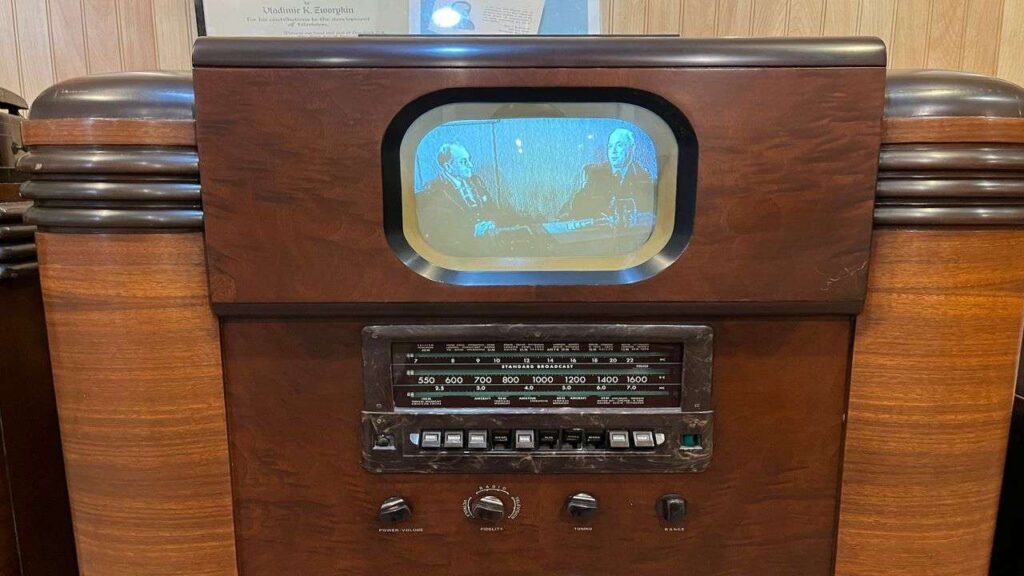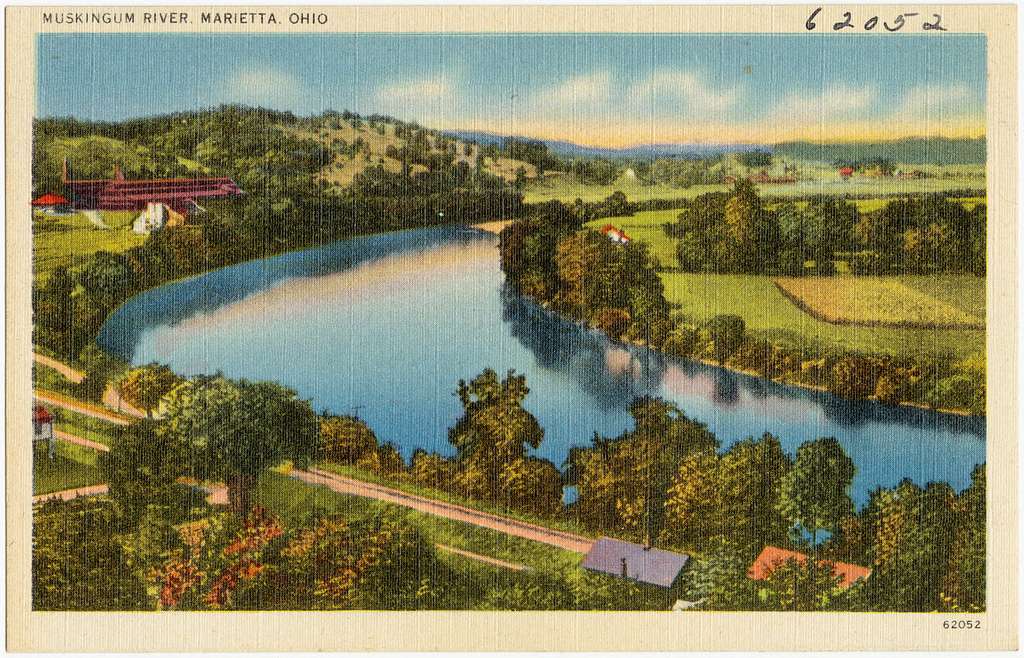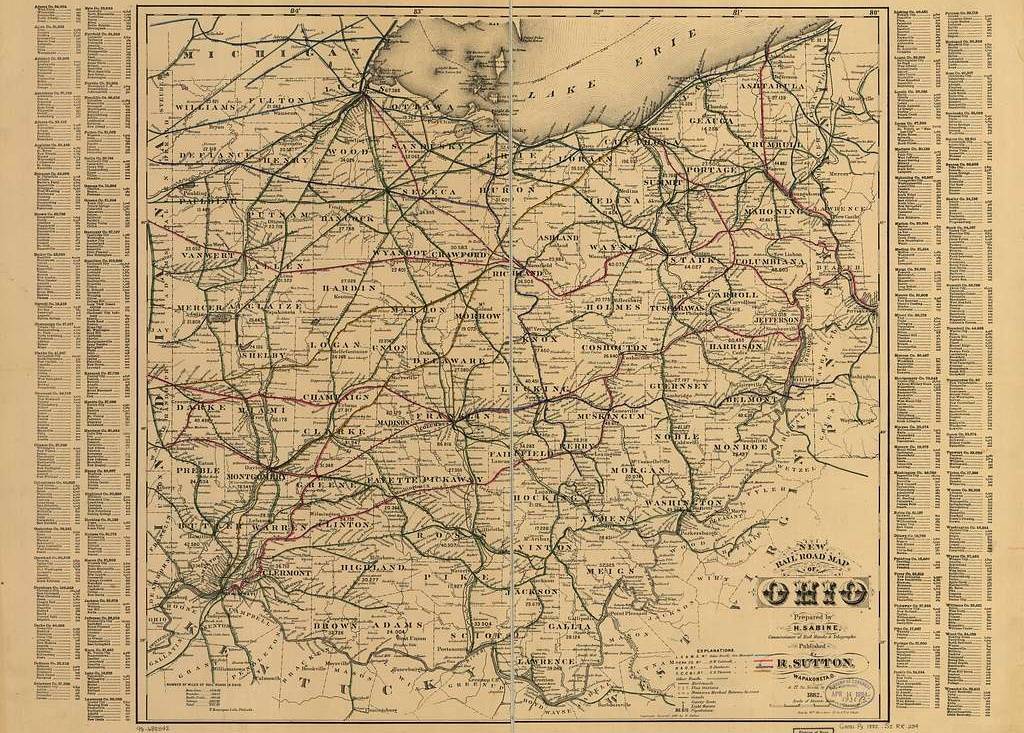So many of the products that we use on a regular basis today, we know who invented it and when and often how. But, some things are just complicated. Like … the television. Who invented the TV? Nobody knows. Actually, we do, and it’s just too complicated to come up with an answer.
Technically speaking, Television wasn’t a new thing when it was “invented”. Radio had been around for some time, which allowed sounds to be transmitted via “radio waves” through the air. Radio, similarly, was something of a fork from telegraph technology. So, starting in the early 1900s, a bunch of people started working on ways to broadcast images (or pictures) the same way that radios were broadcasting sounds.
It’s hard to say when, exactly, television began because when we think of television, we think of what we have today – a limited set of channels broadcasting over the air, or a seemingly endless stream of channels broadcasting through little boxes attached to our sets either from the cable company or streaming over the internet.
What we must remember is that early “television” was really nothing like they are today. In 1922, Charles Francis Jenkins managed to broadcast a set of still images via telephone wires. A year later, he managed to transmit moving pictures at 16 frames per second (and a resolution about the size of a postage stamp.)
Slowly, though the technology evolved into the product we have today.
The question is, though – when did it begin for Ohio?
December 17, 1947
The first television broadcast in Ohio occurred on December 17, 1947 when Cleveland’s WEWS Channel 5 went on the air.
I probably should stress that this is a technical fact as there had previously been some broadcasts, even in Ohio, using either an “experimental license” or were otherwise used to test and refine this new form of technology. WEWS was also the sixteenth “television station” license issued in the USA – just the first in Ohio.
In case you were wondering, the first thing televised in Ohio was the annual Christmas Pageant from the Public Auditorium and was hosted by Jimmy Stewart, who was already on his way of proving himself as an established actor and public personality.
WEWS Throughout History
Beyond being the first television broadcasting company in Ohio, WEWS is believed to have (over the years) contributed to making television more like what it is today.
One of the programs WEWS is most noted for broadcasting was The Giant Tiger Amateur Hour (later renamed the Gene Carroll Show) which went on to become the longest running Amateur variety show in US Television history.
Another important show in WEWS history was “One O’Clock Club” hosted by Dorothy Fuldheim – an hour-long news broadcast that ran daily during the one o’clock hour for thirty-seven years, during which Fuldheim was able to attract interviews with names such as Helen Keller and The Duke of Windsor. (Not bad for a local station at the time.)
WEWS began airing The Breakfast Exchange in 1972 which would feature lighter news segments, information about local celebrities, movies and plays, while taking a more entertaining approach to the morning news. Years later, Good Morning America would borrow this formula, which would soon be copied by pretty much every other morning news program.
Later in the 1970s, WEWS would pioneer the use of handheld cameras and helicopters during their “Eyewitness News” programs, taking traditional news outside the studio successfully for the first time. They were among the first to use “man on the street interviews” and seemed to be on the forefront of nearly every modernization attempt made in television.
Sometimes, You Just Had to Have Been There
Due to the nature of the medium, it would be impossible to list every one of Ohio’s contributions to the history of television, either directly or indirectly.
Yet, there still appears to be something special about Ohio’s history of television that is hard to put your finger on. Things I don’t seem to get a sense of when I speak with people who aren’t from here.
The way you hear people talking about personalities like Cincinnati’s Bob Brawn, for example. Or the way that Jerry Springer would recap parts of the nightly news before he started his own show that, let’s face it, even though it wasn’t considered good quality entertainment by many people’s standards, it still changed the medium forever.
One of my earliest memories of Ohio was being on the Uncle Al show. By that, I mean I was one of the kids sitting in the “audience” – not being one of the weather people or Lucky the Dog. Years later, when being interviewed for a job in a television studio, I was surprised to learn that not everyone knew who Uncle Al was, or Captain Windy, or The Ding-A-Lings … but I still got the job.
As a kid, I fell in love with television because I thought it was magical – at least, in its own way.
There’s no sceintific proof (or historical evidence) that Ohio Television was any better or more influential than television from any other place – but if you’re from here, and you’re of a certain age – I bet you know exactly what I am talking about.
Maybe, sometimes, things just have to be experienced to understand.



